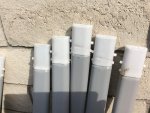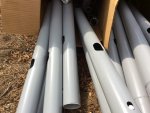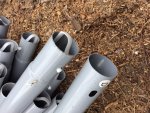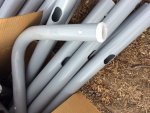Just poured the concrete pad for our pool and a separate concrete equipment pad, about 30 feet away from the pool. I'll be swapping the Intex 1/2 HP Pump & 12" Sand Filter for a Pentair 2-HP, 2-Speed pump with a 150 sqft cartridge filter. Do I need to bond either the equipment pad or the pool pad? if I bond one or the other or both seperatly, do the bond loops have to be connected as well, at that distance? Is there a need to bond the water through the skimmer as has been recommended here in other posts. If the pool needs a bond loop, I'll have to figure something out as I wasn't thinking of that when the concrete was poured.
I've read all I can find, but I'm still a bit confused. I do believe I understand the difference between a ground and a bond loop from what I've read on the forum. I Believe I understand what a bond loop is supposed to accomplish. I understand the basics.....
Just not sure of the proper application for my reality....
thanks, Bob
I've read all I can find, but I'm still a bit confused. I do believe I understand the difference between a ground and a bond loop from what I've read on the forum. I Believe I understand what a bond loop is supposed to accomplish. I understand the basics.....
Just not sure of the proper application for my reality....
thanks, Bob







 That is different from the ultra frame I had, it was metal to metal for the top rail and the legs.
That is different from the ultra frame I had, it was metal to metal for the top rail and the legs.